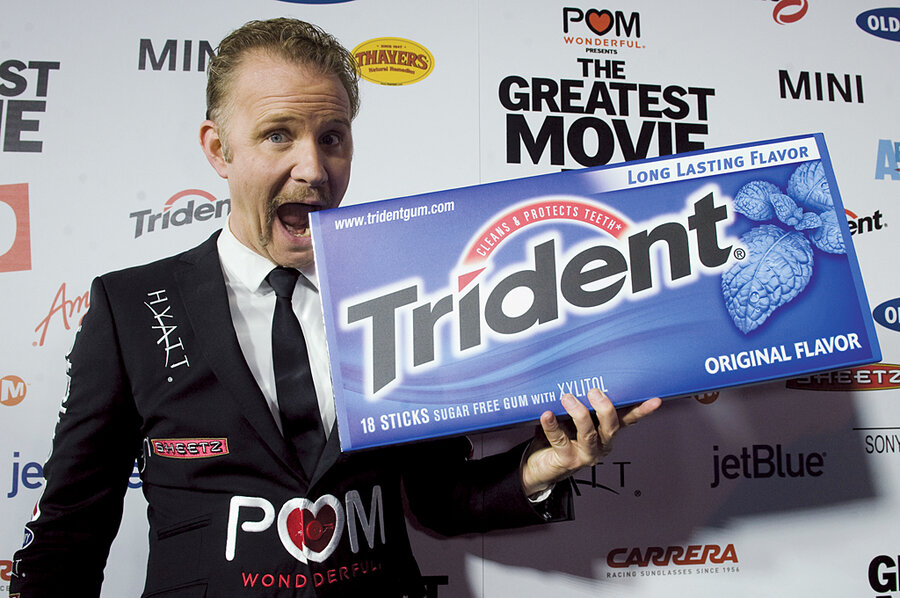Your product could appear here
Loading...
We’ve all seen it: Favorite sitcom characters exchange witty banter from opposite sides of a sofa. A box of Cheez-Its and a can of Coke sit on the coffee table in front of them, enhancing one character’s identity as a lovable slob. Products just got advertised, the show made money, and you, the consumer, hardly noticed. But would you notice if that Coke became a Pepsi in a rerun?
It used to be that products that appeared on a television show were written into the script months before it aired. But that’s starting to change. Digital product placement – making something appear that wasn’t there in the initial shoot – is shifting the product-placement paradigm.
With new software, advertisers can now transform Coke into Pepsi, Cheez-Its into Wheat Thins, or a Ford into a Lexus with the click of a mouse. And they can do it postproduction. Every rerun of an episode could potentially have a different range of products.
Traditionally, networks earned ad dollars through the 30-second commercials that appear before or during shows. But on-demand viewers can bypass most traditional commercials. “TV’s role [in programming] will decline over time in favor of digital providers,” says Avi Dan, Forbes columnist and founder of Avidan Strategies. The advantage of the 30-second spot is that it “can deliver emotions … [and] gather a fairly large audience.”
But recent Nielsen research shows that consumers favor product placement in TV shows and movies over commercial breaks. What was once an issue for marketers when online streaming (Netflix, Hulu, TiVo, DVRs) started to edge out live TV viewership now might become moot with digital product placement.
The new technology, introduced in 2011, has its shortcomings: It can’t integrate a product into a script (recall the “Seinfeld” episode “The Junior Mint”). Digital product placement has yet to take off in the United States. Globally, the product-placement market is around $8.2 billion.
Mr. Dan sees an increasingly intimate future for consumer and marketer relationships: Different viewers “could watch the same show and [see] different products inserted,” in the manner that Facebook and Google provide different ads for different users based on consumer history.
But this kind of hyper-awareness also has the potential to backfire with a public that has a growing resentment toward such big data intrusions. Morgan Spurlock explored whether this kind of product invasion would be welcome in his 2011 documentary, “The Greatest Movie Ever Sold.” It wasn’t.
And for the record, Coke and Cheez-Its, et al., did not pay for their placement in this column.








